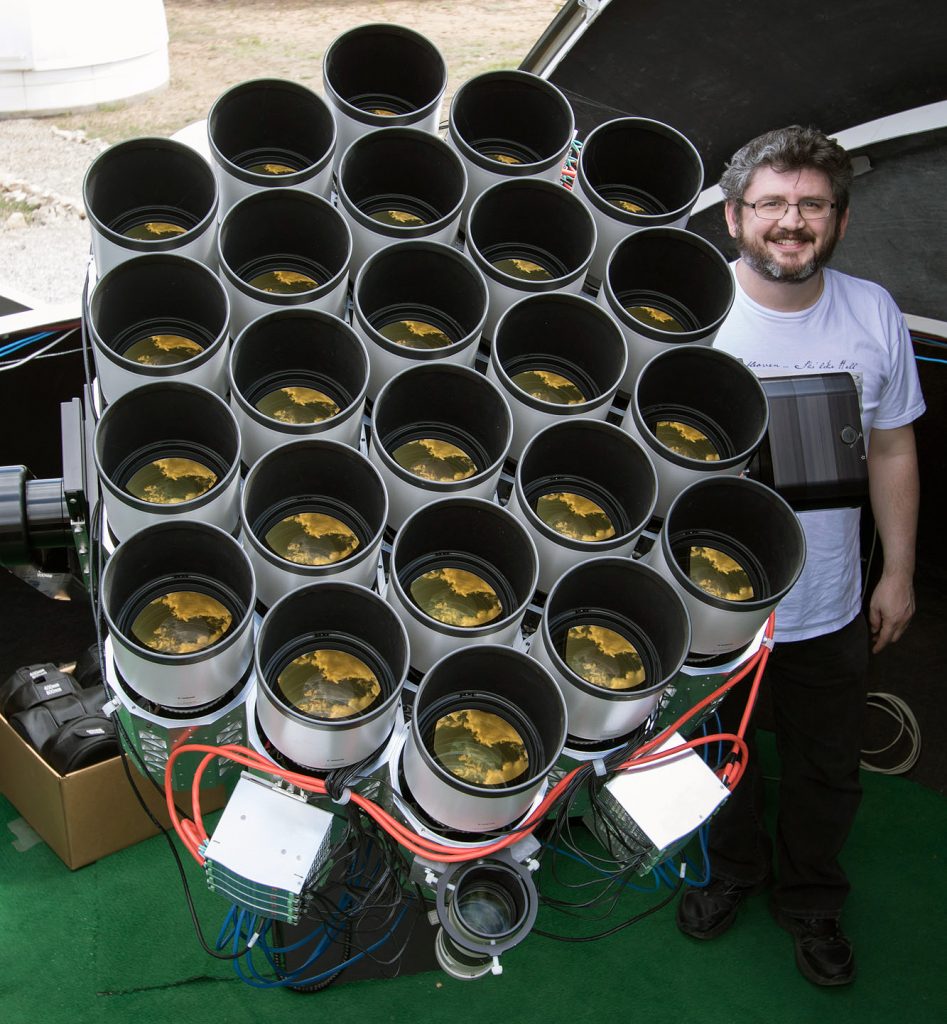Information Technology Services (ITS)
ITS aids U of T researcher working in New Mexico
Published on: December 12, 2019

Roberto Abraham, a professor in the Department of Astronomy & Astrophysics and associate chair of Graduate Studies at the University of Toronto (U of T). Pictured with his Dragonfly Telephoto Array technology.
What do Information Technology Services (ITS) and dark matter have in common? The answer is: Roberto Abraham.
He is a professor in the Department of Astronomy & Astrophysics at the University of Toronto (U of T). His research focuses on understanding dark matter through the study of the low surface brightness universe and harnessing the potential of distributed telescopes, combined with advances in information technology, for transformational science. Abraham’s research is called the Dragonfly Telephoto Array (read more on Abraham’s research).
Back in 2017, Client Support Services— now the Digital Workplace team — within ITS, first worked with Abraham during a time in which he was encountering workstation reboot and update issues in his New Mexico, U.S., lab during the monitoring of a solar/lunar eclipse.
Now, in 2019, ITS is again assisting him with getting the software he needs and setting up his new computing environment in New Mexico to continue aiding his research.
“ITS has been hugely important to the success of this project!” said Abraham. “Dragonfly builds up a large telescope through massive parallelism and robust IT support is at the heart of it. It was a pleasure working with Ivan [Sestak] and his team. They really came through for us when we were having some complicated issues and it made all the difference.”
Ivan Sestak, Senior Manager of Operations and Integration, is leading the team assisting Abraham. He says custom software called SkyX is being used to conduct the research on a Windows 10 long-term servicing branch (LTSB). This specialized version of Windows 10 is available at U of T through the Microsoft Campus Agreement at no cost.
“Roberto needed a specific version LTSB to ensure availability and uptime at crucial moments, such as during data gathering through the instruments,” said Sestak. “As a result, he needed flexibility in the operating system over and above the standard offering to customize the settings and tweak the performance.”
The U of T Campus Agreement provides CORE CAL licenses, Microsoft Windows, Microsoft Forefront Endpoint protection and Microsoft Office Professional for Windows or Macintosh for installation on University-owned equipment.
The agreement allows ITS to work with faculty and researchers to determine their needs and how to best help them save money, said Sestak. For more information, visit: main.its.utoronto.ca/microsoft/.

